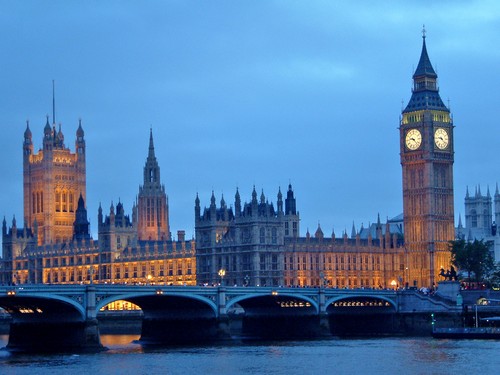The goals of the educational program in England are:
- To share first-hand, in-depth comparative knowledge about how policies and practices in the UK differ from the US, specifically related to marginalized populations of learners,
- To understand, in practical terms, the differences between higher education institution types within the UK,
- To analyze the cultural differences in conceptualizing access, research interests and policy issues with colleagues at a variety of institutions, and
- To develop professional connections between higher education practitioners and researchers in England and the Center for the Study of Higher and Postsecondary Education.
Activities in England associated with each of these goals include:
Joint symposia presentations with colleagues at the University of Cambridge. We will engage in a day of dialog with Dr. Anna Vignoles, Director of Research and Professor of Education, and her colleagues at the Faculty of Education. Topics to be considered include access and progression to higher education in sub-Saharan Africa and South Asia, identifying patterns in student learning, the unintended consequences of school exams for university access, faculty construction of merit in high-performing doctoral programs, and patterns and consequences of inequitable access to rigorous high school coursework.
On overview of UK hot-button topics. Dr. Anna Vignoles will also provide an overview of the English education system from the perspective of researchers who study educational policy and teaching and learning.
Conversing and consulting with sixth form school leaders and education foundation executives engaged in preparing students and supporting research and programs which advance students’ higher education preparedness and access.
Participants will engage in journaling (written and visual), and debriefing sessions will be scheduled to discuss questions, observations and insights into the global and national influences shaping higher education in the United Kingdom. Time will also be devoted to abstracting and developing propositions to explain similarities in U.K. and U.S. higher education as well as the “cultural particularities”. Journaling will be based on observations and insights gained from visits to higher education institutions that vary in age and mission. Among our visits are:
University of Cambridge – 1209 is the earliest record of scholarly study being practiced at Cambridge. In 1446, Henry VI, founder of Eton and of King’s College, Cambridge, laid the first stone of King’s College Chapel.
University College London – founded in 1826 to open up university education in England to those who had been excluded from it. In 1878, it became the first university in England to admit women students on equal terms with men.
Sutton Trust – founded in 1997 by Sir Peter Lampl to improve social mobility through education. As well as being a think-tank, the Sutton Trust describes itself as a ‘do-tank,’ having funded over 200 programs, commissioned over 140 research studies and influenced government education policy by pushing social mobility to the top of the political agenda. Sutton’s mission has been compared by some to the Lumina Foundation here in the US.
University of Oxford, CHEPS and New College, Oxford – While having no known date of foundation, there is evidence of teaching as far back as 1096, making it the oldest university in the English-speaking world, and the world’s second-oldest surviving university. OxCHEPS is the Oxford Center for Higher Education Policy Studies located in New College.
Observatory on Social Mobility and University of Warwick – the University of Warwick is a fascinating campus with a reputation for being innovative and experimental (e.g., they are opening a branch campus in Sacramento, CA). The Observatory is similar to research institutes at U-M.
Pimlico Academy – a turn-around success story located in the area of South Westminster, London, Pimlico continues its mission to widen participation in higher education. As an academy it is a fee-free school, serving students grades seven through thirteen.
Newham Sixth Form College (NewVic) – another example of pre-college education, NewVic is an example of a sixth form college. The term ‘sixth form’ describes the school years numbered 12 and 13, which are called the Lower Sixth (L6) and Upper Sixth (U6) by many schools. Until very recently, education was only compulsory until year 11, when a student is 16.
Some of the key people we will meet on these campuses are:
- Anna Vignoles, Director of Research and Professor of Education, Faculty of Education, University of Cambridge,
- David Palfreyman, Director of OxCHEPS and Bursar of New College at the University of Oxford,
- Christina Hughes, Pro-Vice Chancellor of Learning and Teaching, University of Warwick,
- Simon Marginson, Professor of International Higher Education, Institute of Education, University College London.
Visits to historical sites and cultural activities are also planned. Examples are:
St. Martin in the Fields – An English Anglican church at the northeast corner of Trafalgar Square, London, the church is dedicated to Saint Martin of Tours. There has been a church on the site since the medieval period. The present building was constructed in a Neoclassical design by James Gibbs in 1722–1724. It is known for its music concerts, both classical, choral, and modern.
Bodleian library – The main research library of the University of Oxford is one of the oldest libraries in Europe, and in Britain is second in size only to the British Library with over 11 million items.
Blenheim Palace – This country house, situated in Woodstock, Oxfordshire, is the principal residence of the dukes of Marlborough, and the only non-royal non-episcopal country house in England to hold the title of palace. The palace, one of England’s largest houses, was built between 1705 and circa 1722. Blenheim Palace was designated a UNESCO World Heritage Site in 1987. It is the birthplace and ancestral home of Winston Churchill.
Portobello Road street market (Notting Hill) – The market began as a fresh-food market in the 19th century; antiques dealers arrived in the late 1940s and ’50s, and now have a substantial number of them trading mainly on Saturday mornings. It is the largest antiques market in the UK.
Buckingham Palace – Changing of the Guard at the Queen’s London residence is steeped in tradition and pageantry. The Queen’s Guard is the names given to contingent of infantry charged with guarding the official royal residences in the United Kingdom. The British Army has regiments of both Horse Guards and Foot Guards predating the English Restoration (1660), and since the reign of King Charles II these have been responsible for guarding the Sovereign’s palaces. Contrary to popular belief, they are not purely ceremonial and are fully operational soldiers.
Westminster Abbey – A church has stood on this site, located just to the west of the Palace of Westminster, since 1080. It is one of the most notable religious buildings in the United Kingdom and has been the traditional place of coronation and burial site for English and, later, British monarchs. Between 1540 and 1556 the abbey had the status of a cathedral. Since 1560, however, the building is no longer an abbey nor a cathedral, having instead the status of a “Royal Peculiar” – a church responsible directly to the Sovereign. The building itself is the original abbey church.
Parliament building and “Big Ben” – The Palace of Westminster is the meeting place of the House of Commons and the House of Lords, the two houses of the Parliament of the United Kingdom. Commonly known as the Houses of Parliament after its occupants, the Palace lies on the Middlesex bank of the River Thames in the City of Westminster, in central London.
Tower of London – The Tower of London has played a prominent role in English history. It was besieged several times and controlling it has been important to controlling the country. The Tower has served variously as an armoury, a treasury, a menagerie, the home of the Royal Mint, a public records office, and the home of the Crown Jewels of England. The peak period of the castle’s use as a prison was the 16th and 17th centuries, when many figures who had fallen into disgrace, such as Elizabeth I before she became queen, were held within its walls.
Windsor Castle – The original castle was built in the 11th century after the Norman invasion by William the Conqueror. Since the time of Henry I, it has been used by succeeding monarchs and is the longest-occupied palace in Europe.
Ye Olde Cheshire Cheese – Ye Olde Cheshire Cheese is one of a number of pubs in London to have been rebuilt shortly after the Great Fire of 1666. There has been a pub at this location since 1538. The literary figures Oliver Goldsmith, Mark Twain, Alfred Tennyson, Sir Arthur Conan Doyle, G.K. Chesterton, P. G. Wodehouse and Dr. Johnson are all said to have been ‘regulars’. Charles Dickens had been known to use the establishment frequently, and due to the pub’s gloomy charm it is easy to imagine that Dickens modelled some of his darker characters there. The pub is famously alluded to in Dickens’s A Tale of Two Cities.
Pre-Departure Activities: To optimize learning in England, participants will engage in several pre-departure activities:
Briefings on the English higher education system are held in advance of departure. Readings will be shared, and discussions will be led by faculty lead, Dr. Janet Lawrence.
Students will be assigned a specific campus or site to research and will help facilitate on-site observations and questions.

